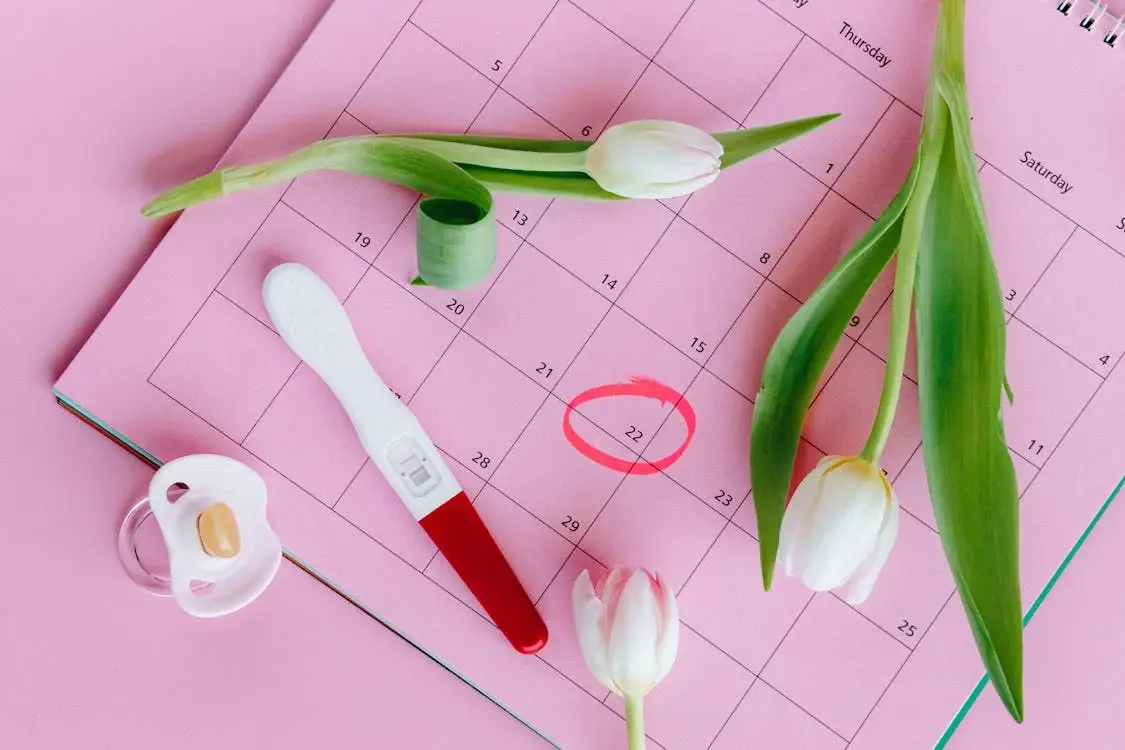For anybody aiming to fall pregnant, understanding your menstrual cycle and fertile window is crucial. Your fertile window plays a large role in your chances of conceiving, so being able to recognise when this is for you may assist in increasing your chances of falling pregnant.
However, for some people, this part of your cycle may be difficult to recognise. Whether your cycle is irregular or if you are unfamiliar with what ovulation typically looks and feels like, tools such as ovulation calculators may be able to help.
We have designed an ovulation calculator that aims to assist you in your fertility journey. For personalised advice, contact our team at Create Fertility today.
Try our ovulation calculatorWhat is Ovulation?
Ovulation is a part of the menstrual cycle and generally occurs about midway between periods. For a person with an approximately 28-day cycle, ovulation tends to occur around day 14.
Ovulation occurs when one of the ovaries releases a mature egg through the fallopian tubes. If the mature egg is fertilised by sperm, the egg travels to the uterus, where it may implant and develop into a pregnancy. If fertilisation does not take place, the egg disintegrates, and hormone levels shift to signal the onset of menstruation (a menstrual period).
Common Ovulation Signs and Symptoms
Some people who menstruate may notice ovulation more than others. Some people may have no noticeable signs or symptoms, while others may experience symptoms such as:
- Breast tenderness
- Mood changes
- Increased basal body temperature (BBT)
- Light spotting
- Heightened libido
- Changes in cervical mucus
- Ovulation pain
Ovulation and The Fertile Window
Ovulation and the fertile window are closely related. Your fertile window is the period of time during your cycle when you are most likely to fall pregnant.
Ovulation itself— the process where the egg is released from the ovary— lasts approximately 24 hours, whereas your fertile window typically lasts about six days. While this varies from person to person, your fertile window is typically five days before ovulation, the day of ovulation, and the day after ovulation. This is because sperm have the ability to survive this length of time in the reproductive tract, waiting for an egg to be released.
If you have sexual intercourse during your fertile window, you are generally more likely to fall pregnant than at other times during your cycle. As such, for many people aiming to fall pregnant, tracking both ovulation and your fertile window may improve your chances of conceiving.
Tracking Ovulation
Tracking your cycle, including ovulation, may be helpful in determining when your most fertile period of each month may be.
To do this, track your menstrual cycle by noting when your period begins each month. The first day of your period will be day one of your cycle, and your cycle continues until the day before your next period.
Once you have an idea of how long your cycle is (generally 28 days, though this varies from person to person and sometimes month to month), subtract 14 days from the total number of days of your cycle. This will most likely be your ovulation day. However, keep in mind that this is an average and your ovulation day may not be the same every month.
What If My Cycle is Irregular?
If your cycle is irregular, predicting ovulation may be more challenging, but it is generally still possible. An irregular cycle means that the time between your periods varies, often making it harder to use standard calendar methods to track ovulation.
However, there are other ways you may be able to identify your fertile window. For example, ovulation predictor kits (OPKs) may help detect an increase in luteinising hormone (LH) that occurs just before ovulation. Tracking your cervical mucus and monitoring your basal body temperature over several months may also provide valuable insights.
Ovulation Calculator
For people looking for a simpler way to estimate their fertile window, our ovulation calculator may be a useful tool. By inputting details about your cycle, such as the first day of your last period and your average cycle length, ovulation calculators such as ours may help to predict when you are most likely to ovulate.
While no ovulation calculator can confirm ovulation completely, it may provide a helpful starting point for understanding your cycle so that you can time intercourse accordingly. Using an ovulation calculator alongside other tracking methods may improve accuracy and give you a clearer picture of your fertile windows.
Try our ovulation calculator here:
Ovulation Calculator Tool
Helping You Through Your Fertility Journey
Understanding your cycle, especially your ovulation and fertile window, is often a valuable tool in your fertility journey. While no method is 100% precise, our ovulation calculator is designed to help predict your most fertile window based on your cycle details.
At Create Fertility, we are dedicated to assisting couples and singles alike to expand their families. For further information or to speak with one of our renowned fertility specialists, contact our friendly team today.





